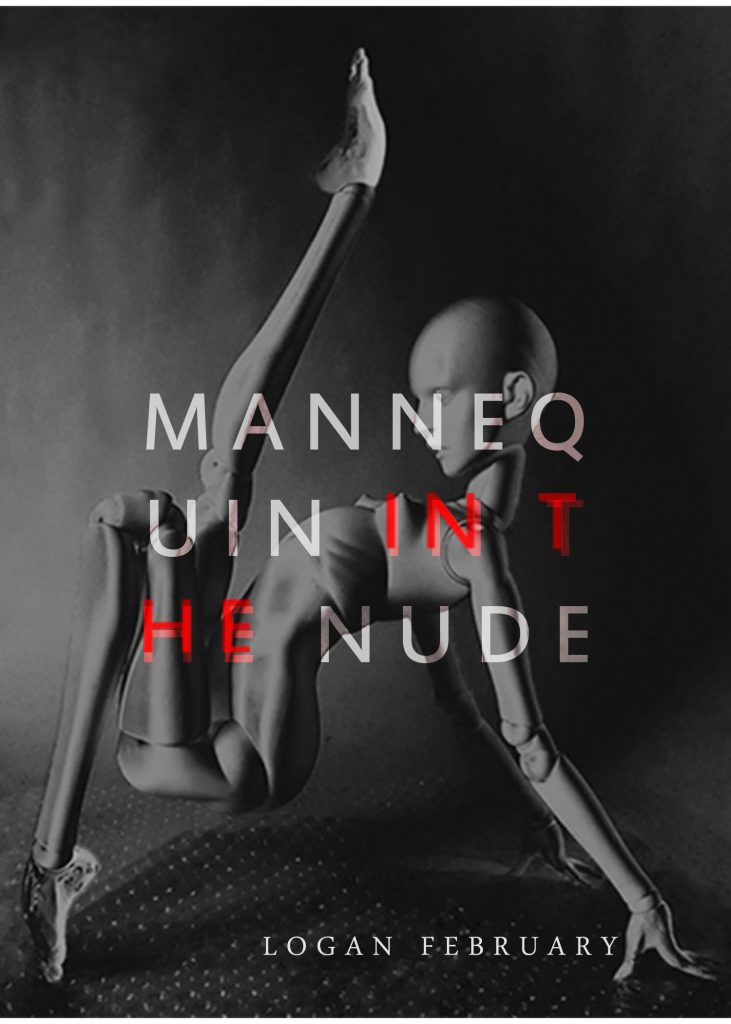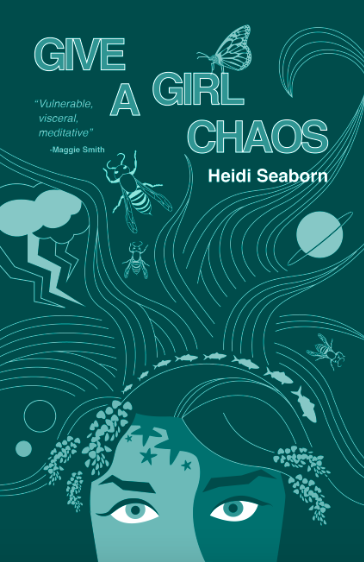Our Editorial Assistant Erinn Batykefer sat down with Mannequin in the Nude author, Logan February to discuss all things poetry.
In his engrossing collection, poet Logan February documents and interrogates grief, and God and examines what it is to be on the outside, even in the family setting — the reality of having a queer identity in the African world. In this volume, eroticism and manic depression are navigated alone. Some of the poems use a mannequin as a projective tool to dissect self hood, histories, and family connections in the aftermath of a fundamental bereavement. February additionally explores religious concepts to further mythologize the self, collecting Buddhist philosophies and Yoruba proverbs and myths, and putting them adjacent to the toxic tenets of Pentecostal Christianity, which is widespread in Nigeria. In the vein of confessional poetry, the narrative takes its pride in exposing the elements which are deemed taboo and advised to be hidden away. The poems are equally fearful and raunchy, tender and defiant, morose and youthful.
Erinn Batykefer: Your new book, Mannequin in the Nude, is voracious in the use and transformation of forms (cento, haibun, sonnet (a crown of them!), alexandrine, villanelle, etc) and language in a way that makes them belong to this book. Is all of your writing acquisitive?
Logan February: Thank you for noticing all of the forms in the book! I like to think of form as method. It can be quite exciting to make a task out of a poem’s execution. The sonnet crown, especially, is integral in the dissection of projections and the self, but also in furthering the narrative arc of the book toward some semblance of a resolution. But the poem does not always want to be methodical, sometimes it desires indiscipline, to not be constrained. I try my best to honor that, too, to ensure I am writing the truest incarnation of the poem. It changes as my mental landscape changes, and I’m grateful to have a bounty of forms to keep up with the flux. I think the most important thing is that I’m not bored by the poems I’m writing.
EB: If you could take on motherhood for a moment and give someone we’ve lost a name like Durojaye to encourage them to stay, who would you re-name?
LF: If I could name anyone Dúrójayé, it would be Gabriel Fernandez and Giovanni Melton (the poem ‘Alexandrines on Grief’ is dedicated to them), because they died far too young, and had so much more life to live. For them I would take on motherhood.
EB: Poems like “Corpus Vile” call up Tyehimba Jess’s “double jointed” poems, where each column is a poem and reading across the spine is a
third. Is there a particular order you follow when you read this one? When you wrote it?
LF: Ah, yes, contrapuntals are one of my favorite forms! A hell of a challenge, too. Tyehimba Jess’ contrapuntals were the first I ever read, and I was utterly captivated. Other favorites are Xandria Phillips’ ‘You and I’ and Safia Elhillo’s ‘yasmeen.’ When I read ‘Corpus Vile’, I start with the left column, then the right, and then I read them across.
Writing it wasn’t that simple. I had practiced writing “second halves” to short poems I found, trying to synthesize second and third narratives from pieces that were already complete. There were lots of rewrites and frustration while I was drafting ‘Corpus Vile’. I didn’t figure it out until I started to work on both columns almost, but not quite, simultaneously.
EB: Mannequin’s speaker(s) believe “resurrection is a holier thing than rebirth.” Is this an idea that you bring to your writing process?
LF: This consideration was born from comparative examinations of the concepts of resurrection in Christianity, and rebirth in Buddhism. I was raised on the idea that rebirth was somehow evil, while resurrection was this miraculous and wonderful snapping back to life, which I think is a load of bullshit. This comes up because the book worries the question of death, and what it could mean to live again. To continue or to start over?
When this question is directed at the creative process, I find it even more curious. I don’t often revisit ideas that I feel have reached a dead end, but it does happen every now and then. But when I do bring an idea back to life, it’s not the same as it was before. So is this idea resurrected or reborn? I’m not sure, but I think they may have more to do with each other than we assume.
EB: If you could upload one text into the brains of your readers Matrix-style before they opened your book, what would it be?
LF: It would be Richard Siken’s Crush, mostly because that book was one of the first in which I felt seen. It’s a phenomenal work of poetry that everyone should read. My book would probably pale in comparison, but that’s okay
EB: Is there any word you wouldn’t put in a poem?
LF: I can’t think of any. I don’t have a least favorite word. I mean, I’m not interested in writing hateful words, but maybe someday I’ll be interested in reclaiming a slur in a poem (obviously, one with contextual proximity to my personal experiences). So you never know. In the end, the poems will decide what words they allow.
EB: What’s your short-term low-commitment hair color recommendation for spring? What color should we all wash in and pretend we’re someone else for a day?
LF: Powder blue, like Frank Ocean (I’ve never done this color, but I would love to!)
EB: Anything else you’d like to tell us? We love you, and we’re terrible at keeping secrets.
LF: Ha, I love you too! I can’t say too much about what I’m currently working on, but there is a strong Sappho influence, and the backbone is a long poem, which is the most challenging thing I’ve ever written, probably. In the meantime, I’ve been trying to get back into reading (more) fiction. My last read was Sigrid Nunez’s The Friend. I thought it was fascinating and quite excellent.
Mannequin in the Nude will be released at AWP and is available for presale at: https://pankmagazine.com/shop/mannequin-in-the-nude/
Logan February is a Nigerian poet. His work has appeared or is forthcoming in Washington Square Review, The Adroit Journal, Vinyl, Paperbag, Tinderbox, Raleigh Review, and more. He is a Pushcart and Best of the Net nominee, and his debut collection, Mannequin in the Nude (PANK Books, 2019) was a finalist for the Sillerman First Book Prize for African Poets. He is the author of two chapbooks, and the Associate Director of Winter Tangerine’s Dovesong Labs. You can find him at loganfebruary.com
![[PANK]](https://pankmagazine.com/wp-content/themes/pank/assets/images/pank-logo-large.png)



